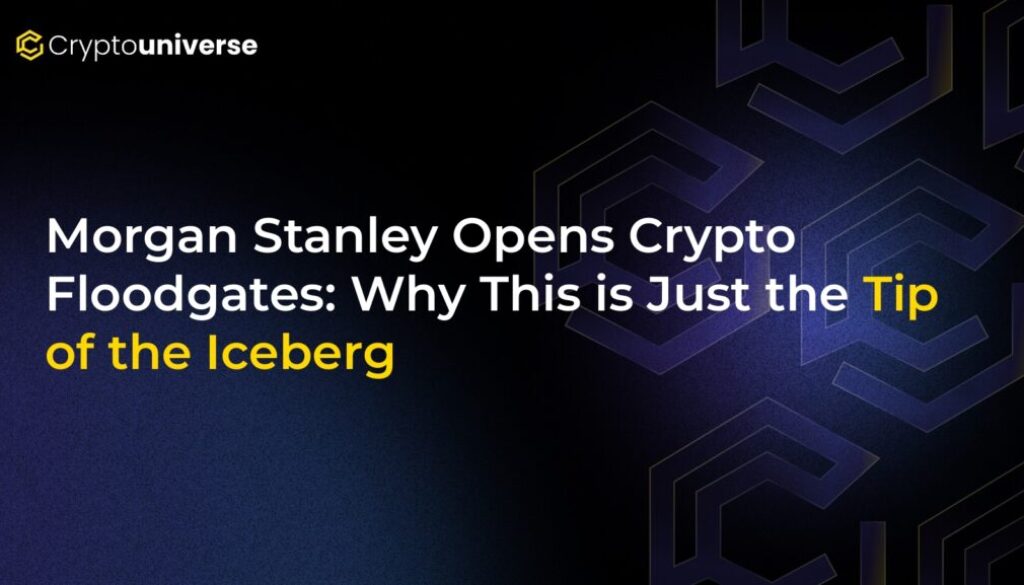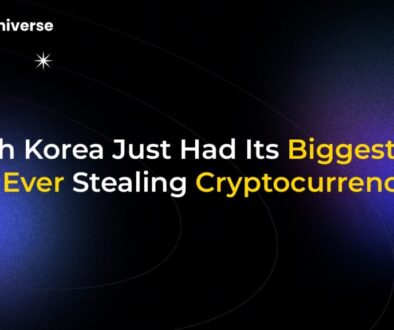Morgan Stanley Opens Crypto Floodgates: Why This is Just the Tip of the Iceberg

Wall Street Giant Makes a Landmark Move into Crypto
In a move signaling a major shift in the financial landscape, banking behemoth Morgan Stanley has announced plans to offer cryptocurrency trading directly to its retail customers. This development is more than just another headline; it’s a powerful endorsement from one of Wall Street’s most respected institutions, suggesting that digital assets are rapidly moving from the fringes to the mainstream. As one executive put it, this is merely the ‘tip of the iceberg’ for the future of digital finance.
The plan, set to roll out as early as next year through its E-Trade platform, will give millions of investors easy access to some of the market’s most popular cryptocurrencies. This decision aligns with a broader trend of institutional adoption and a more favorable regulatory environment, potentially paving the way for a new era of wealth management.
What Morgan Stanley’s Crypto Offering Means for Investors
According to internal communications, the new service will initially focus on a curated selection of leading digital assets. Investors on the E-Trade platform can expect to see access to:
- Bitcoin (BTC)
- Ethereum (ETH)
- Solana (SOL)
This move is a direct response to growing client demand and the evolving perspective on digital currencies as a legitimate asset class. For Jed Finn, Morgan Stanley’s head of wealth management, this initiative is a foundational step. “Offering clients the ability to trade crypto is the tip of the iceberg,” he stated, highlighting the firm’s broader ambitions in the digital asset space.
This development is part of a larger story where traditional finance giants are no longer watching from the sidelines. With a shifting government stance aiming to position America as a global crypto leader, Morgan Stanley’s entry is both a reaction to and a catalyst for further industry growth.
Beyond Trading: A Glimpse into the Future of Finance
The significance of Morgan Stanley’s announcement goes far beyond simple crypto trading. The firm sees this as a gateway to the transformative power of the underlying technology. “We see immense power in the cryptocurrency space, not just with crypto as an investment for our clients, but also around [distributed ledger technology] and tokenization more broadly,” Finn explained.
What does this mean? The focus is shifting towards:
- Distributed Ledger Technology (DLT): The secure, decentralized database technology that powers blockchains. It promises to make financial transactions faster, more transparent, and more efficient.
- Tokenization: The process of converting real-world assets—like real estate, art, or stocks—into digital tokens on a blockchain. This could unlock liquidity and create new investment opportunities for assets that were previously hard to trade.
Morgan Stanley believes these innovations will “significantly” disrupt the wealth management industry, and its latest move is a clear signal that it intends to be a leader in this new financial paradigm. The decision to embrace crypto is a testament to the fact that the industry is maturing, and its underlying technology holds the potential to reshape how we think about assets and value.
Addressing the Elephant in the Room: Crypto’s Energy Consumption
While the financial implications are exciting, it’s impossible to discuss the growth of cryptocurrency without addressing its environmental impact. The process of “mining” cryptocurrencies like Bitcoin requires immense computational power to solve complex mathematical problems, which in turn consumes vast amounts of electricity.
To put it in perspective, some estimates suggest a single crypto transaction can use the same amount of power as several U.S. households consume in a day. The global annual energy demand for crypto has been compared to that of entire countries, raising valid concerns about its carbon footprint, especially when powered by fossil fuels.
A Shift Towards Sustainability?
Fortunately, the industry is not standing still. There is a growing movement towards making cryptocurrency more sustainable. Recent data shows a significant increase in the use of renewable energy for Bitcoin mining, with over half now powered by sustainable sources like hydro, solar, and wind, plus a notable portion from nuclear energy.
Furthermore, major platforms are evolving. Ethereum, the second-largest cryptocurrency, successfully transitioned to a new processing system that slashed its energy consumption by nearly 100%. This proves that the technology can adapt. In other promising developments, crypto miners are actively seeking out excess renewable energy in places like Brazil, turning a potential energy surplus into a productive, greener operation.
The Takeaway: A New Chapter for Digital Assets
Morgan Stanley’s foray into retail crypto trading is a watershed moment. It validates digital assets as a serious component of the modern investment portfolio and signals that the era of institutional skepticism is fading. While challenges, particularly regarding energy use, remain, the industry is actively working on innovative solutions.
The message from Wall Street is clear: the integration of blockchain, tokenization, and cryptocurrencies into the global financial system is not a matter of ‘if,’ but ‘when.’ As Morgan Stanley’s announcement shows, we are only seeing the


